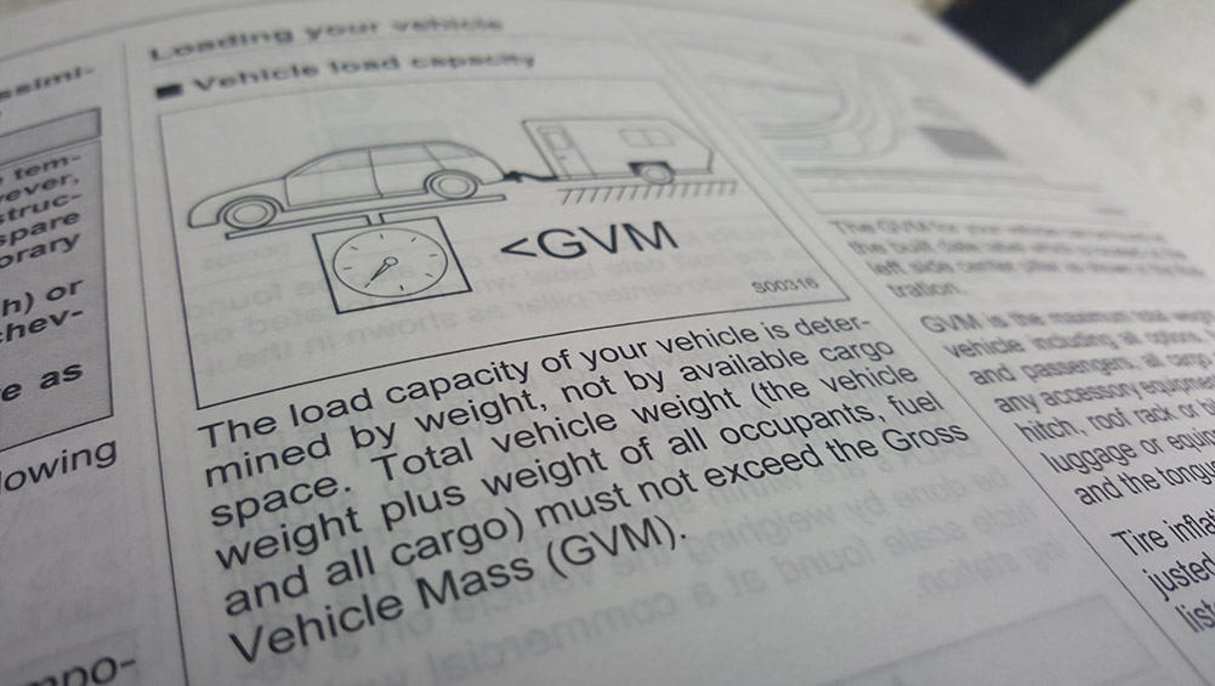Every vehicle has a GVM rating, which is an acronym of Gross Vehicle Mass. That’s the maximum your vehicle can legally weigh when fully loaded, as specified by its manufacturer. Measured in kilograms, this ‘kg’ figure can be found in either the owner’s manual or displayed on the vehicle’s weight placard, which is usually found in the driver’s door opening.
Every owner, particularly tradies with work vehicles that often carry heavy loads, should be just as familiar with their vehicle’s GVM number as their credit card PIN, as research has shown many owners don’t know what GVM stands for, let alone what it’s used for.
The end result is many overloaded vehicles on our roads, with their owners unaware of the risks they’re taking. Driving an overloaded vehicle is dangerous and illegal. If caught, you can face heavy fines and your vehicle could be impounded by police or transport authorities.
Insurers can also reject a claim if you have an accident and your vehicle is proven to be overweight at the time. Overloading can also greatly increase vehicle wear and tear, potentially triggering a tyre or mechanical failure. So, it’s crucial to know your vehicle’s GVM - and ensure you never exceed it.
What’s included in your vehicle’s GVM?

GVM is the aggregate of several things that contribute to vehicle weight. Let’s start with its kerb weight, which is how much the base vehicle weighs with all fluids including a full tank of fuel. This figure is published in either the owner’s manual or in specification sheets issued by the manufacturer, which are usually available online.
Then add the combined weight of any accessories fitted like bull bars, roof racks, tow bars, winches, roof boxes etc plus its payload, which is how much weight you can legally add on top of the kerb weight and accessories. So, that’s everything you load into the vehicle, including driver, passengers and even the pet pooch.
If you’re towing, GVM also includes the trailer’s tow-ball download (TBD) which is roughly 10 per cent of the trailer’s weight. And if your vehicle is a cab-chassis design, the weight of the tray or other body installed on the back is also included in the GVM figure. So, you can see how easy it is to overload a vehicle without even knowing it, but how do you determine if your vehicle is on the right side of the law?
Using a weighbridge
.jpg)
Public weighbridges are easy to find online and generally charge reasonable fees. They usually have an operator on site and provide either a single weighing deck, or in some cases multiple decks.
So, checking your vehicle’s GVM is as simple as positioning all four wheels on a single deck with a full tank of fuel, no payload and no driver. If it exceeds the GVM rating, your vehicle is overweight and therefore illegal.
However, even if it’s below the GVM rating, you’re still not in the clear because you also need to weigh it with the payload it usually carries. For example, if it’s a tradie’s workhorse, that must include driver and all crew, plus tools and equipment. If it’s a weekend escape machine, that’s with driver and all passengers, luggage and camping gear. You may then discover it’s well above the GVM limit.
In either case, if you regularly tow something when your vehicle is heavily loaded like this (plant, caravan, boat trailer, horse float etc), remember that you also have to include your trailer’s tow-ball download in the GVM figure. This can be measured by driving your vehicle onto a single deck, with your trailer in tow but without its wheels on the deck.
There’s also a maximum load that your vehicle’s front and rear axles can carry as specified by the manufacturer in the owner’s manual. The combined gross axle weights usually exceed the GVM to provide a safety margin, but it’s important to know that your load is distributed correctly between them for safe and efficient operation. Axle weights are measured by stopping with only the front wheels on the weighing deck and then with only the rear wheels on the deck.
How to stay on the legal side of GVM

You have two choices: either reduce vehicle weight or increase GVM rating. The first option is obviously the easiest and least expensive, because it simply requires removing things from your vehicle until it’s under the GVM limit. However, that can be easier said than done, if you also have to start removing expensive accessories like bull bars, tool boxes etc which you rely on for work or recreational use.
The only other choice is to legally increase the GVM rating. There are numerous reputable aftermarket companies that can provide this type of upgrade, with all the mandatory government approvals and certifications.
A typical GVM upgrade, depending on vehicle type, can range from around 300kg to more than 600kg in some cases. They usually consist of uprated front and rear springs and shock absorbers that replace the original equipment from the manufacturer (OEM), so it’s all bolt-on stuff with no chassis modifications required.
Either way, you must know your vehicle’s GVM and never exceed it, to ensure it’s not only legal but also safe for you, your passengers and other road users.








.jpg)
.jpg)



.jpg)
.jpg)
.jpg)
.jpg)

.jpg)
